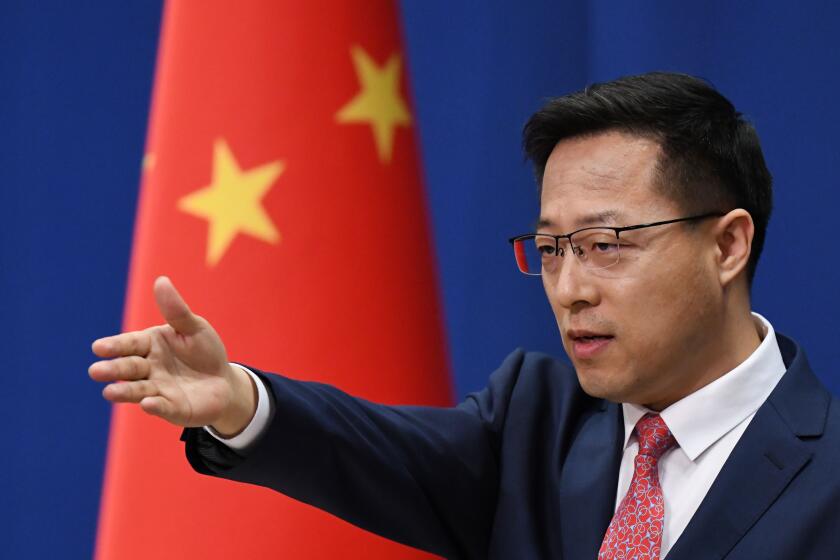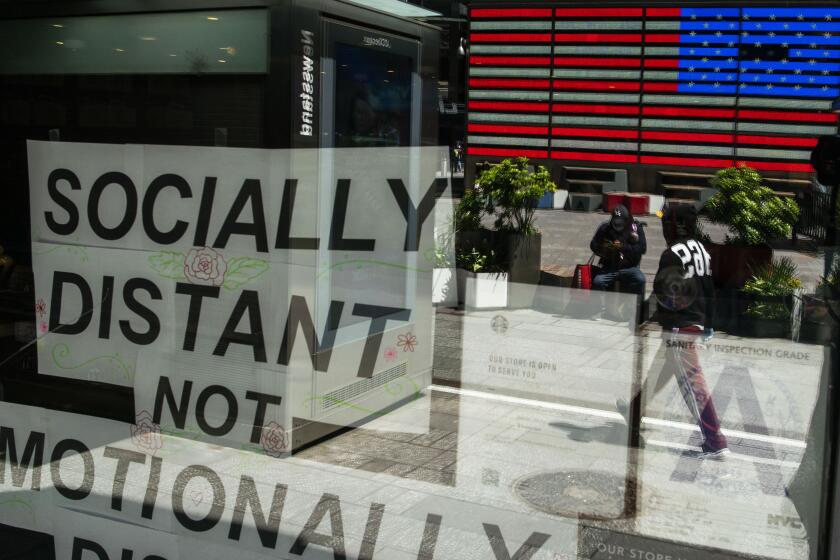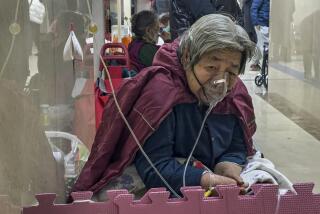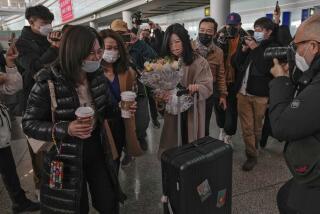Wuhan reopened last month. Now, new coronavirus infections spark mass testing and renewed fears

- Share via
WUHAN, China — Red lanterns swayed in the wind above beeping thermometers. A queue jerked forward every few minutes, moving like toy soldiers through a socially distanced assembly line. Medical staff in goggles and face shields manned three tables: one for registration and temperatures, two for testing.
“Open your mouth,” the staff commanded over and over. The residents in the Jade Belt apartment complex obeyed, wincing, sometimes gagging, as the workers scraped the backs of their throats with long cotton swabs. Security guards hovered around the area, cordoned off with string.
The Jade Belt residents — a few wearing raincoats as protection — were among the first in line after the city government ordered Monday that all Wuhan residents be tested for the coronavirus within 10 days. The action was a swift response to six new cases of COVID-19 reported on Sunday — the first such infections since early April.
The 10-day time frame appeared implausible based on the city’s testing capacity. It was also somewhat impractical given that the limited accuracy of the nucleic acid virus tests were not followed by restrictions on movement. One could test negative Wednesday morning, have lunch with an asymptomatic person that afternoon, and become infected without knowing.
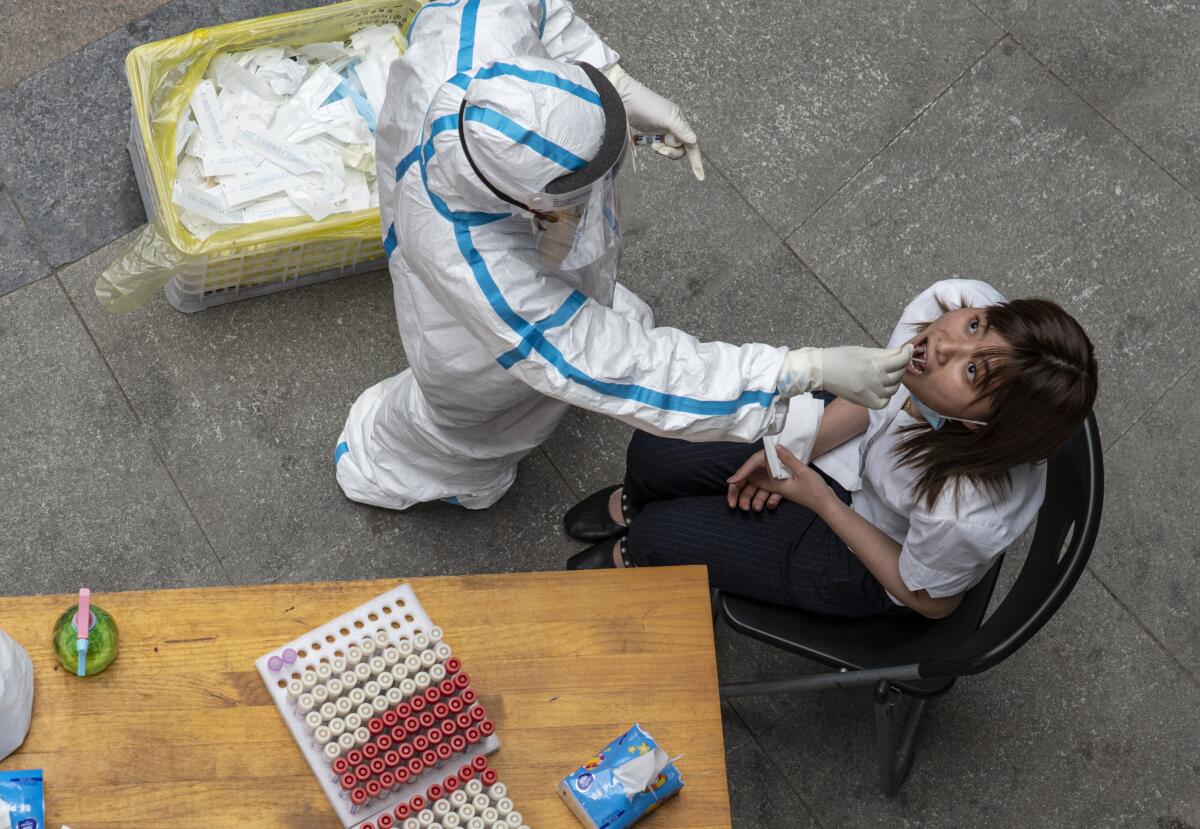
But this was Wuhan, ground zero for a pandemic, and a city the Chinese government was determined to keep under control. The community workers got the message: “Test everyone. All residents. No household left behind,” recited Ms. Duan, a worker in the Jade Belt complex.
China’s residents live under a grid-style social management system: All residential areas are divided into geographical blocks, and street-level authorities assign individual workers to manage each of them.
The system enforces “social stability” in regular times, with these workers monitoring their assigned residents and reporting them for undesirable activities such as gambling or religious gatherings. During the pandemic, they’ve become responsible for enforcing restrictions on movement, registering people for tests, and caring for the vulnerable under lockdown.
‘Put on a mask and shut up’: China’s new ‘Wolf Warriors’ spread hoaxes and attack a world of critics
The aggressive nationalism of China’s diplomats matches the swagger of Xi Jinping’s China, which is determined to deflect blame for the coronavirus.
“Everyone is pretty self-aware,” Duan said. Four people had died in Jade Belt during the first lockdown, she said. Twenty-eight had been infected, a low number compared with many other neighborhoods. Most residents were now eager to cooperate with testing and anything else that might prevent another outbreak.
“Temporary lockdown is for the sake of long-lasting freedom,” declared the large white characters on a red banner hung outside the testing area. Yet one month after Wuhan’s celebrated reopening, that freedom seems still far out of reach.
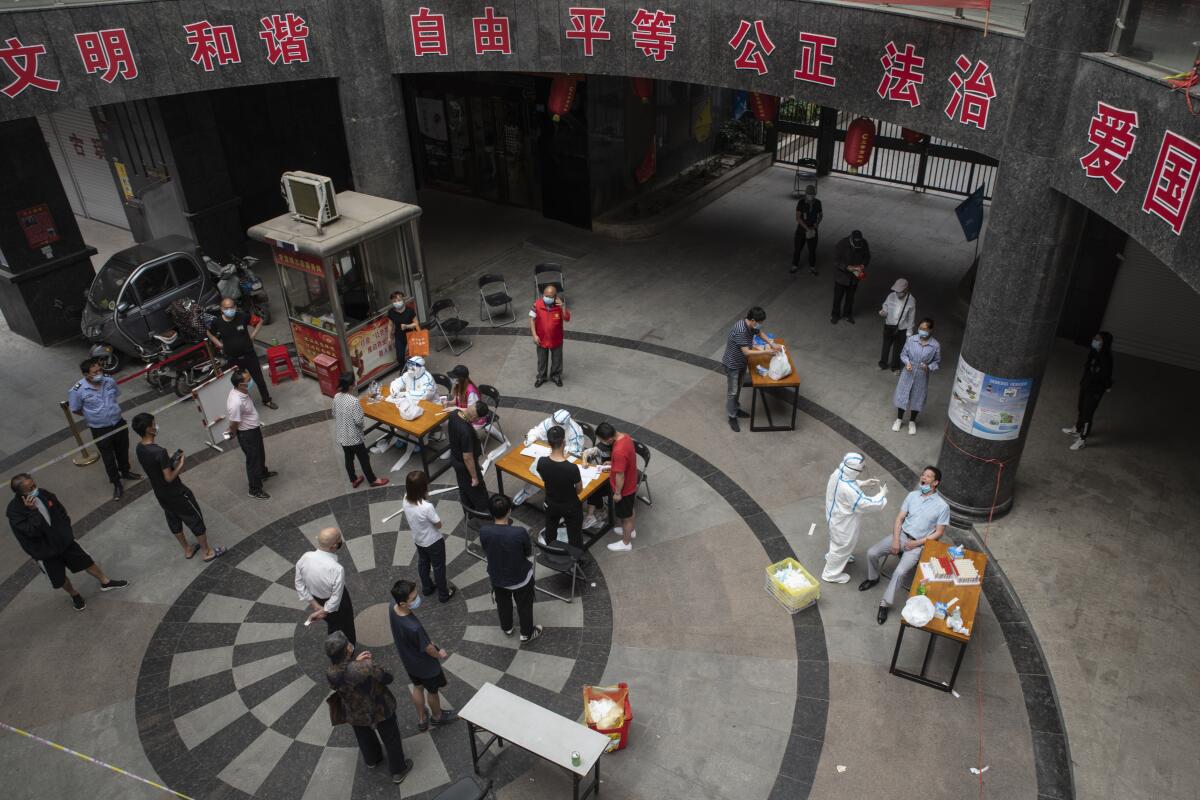
More than 10 million people were sequestered in Wuhan as the pandemic spread across China in January. Many were kept inside their apartments for nearly three months. Thousands of residents died, many of them at home with their families, unable to find space in overwhelmed hospitals.
The world waited as Wuhan hunkered down in those days. Snow and rain swept the city’s empty streets as its people sent endless pleas for help on social media. It took weeks before enough makeshift “cabin hospitals” were built to house the sick and quarantine mild cases and their contacts, and months before the deaths and infections finally dwindled.
Only when the lockdown lifted on April 8 did the city breathe again.
Green banners were hung on apartment compounds declared coronavirus-free, emblazoned with the slogan: “All People’s Anti-Epidemic War — Decisive Battle, Decisive Victory.”
Governors’ coronavirus responses approved of by most Americans; Trump gets far lower rating as he pushes states to reopen economies amid pandemic.
One grade of high schoolers was allowed back to school, though some had to wear watches with QR codes tracking everywhere they went. Swimmers returned to the Yangtze River. Nail salons reopened to customers, who complained that they were gaining weight, now that they could finally relax.
Relieved residents punched holes and removed bars from the blockades that had been erected around their communities, climbing out to see their city again. It felt as if an unwelcome stranger had been banished.
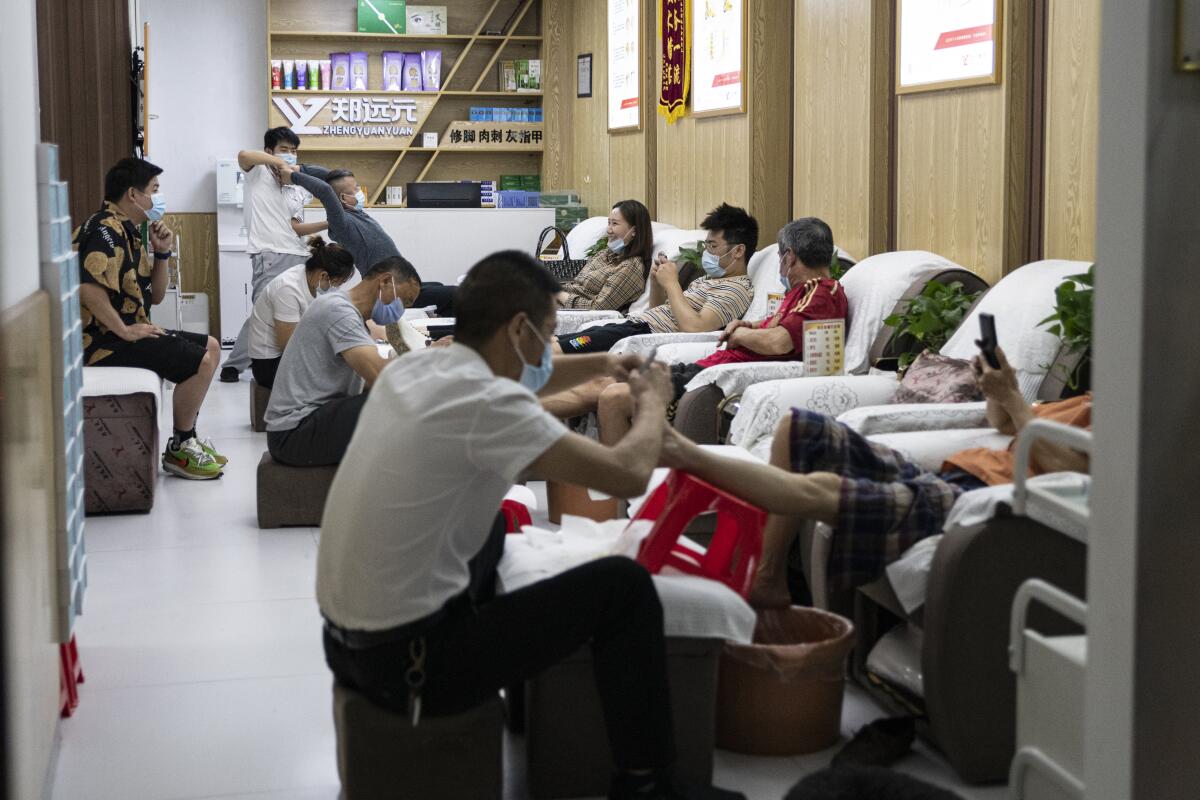
Then came the new cluster: only six cases, a seemingly immeasurable fraction compared to the 50,000 total reported in Wuhan and millions more across the world. But rumors took flight, spurred by lingering distrust and anxiety from the lack of government transparency in January. Residents shared unverified videos online of elderly people dragged into ambulances in different compounds, and warned one another to stay home.
“Should we get our team back together?” wrote a volunteer in a WeChat group of Wuhan citizens who’d spent three months braving the first outbreak in makeshift protective gear, delivering medical supplies and driving patients and nurses to and from hospitals when public transportation was shut down.
By Tuesday afternoon, many communities began blocking their streets again.
Residents of one neighborhood in Qiaokou district were caught by surprise as a makeshift roadblock — orange, yellow, blue and teal shared bicycles stacked on top of one another — appeared at one of their main street entrances.
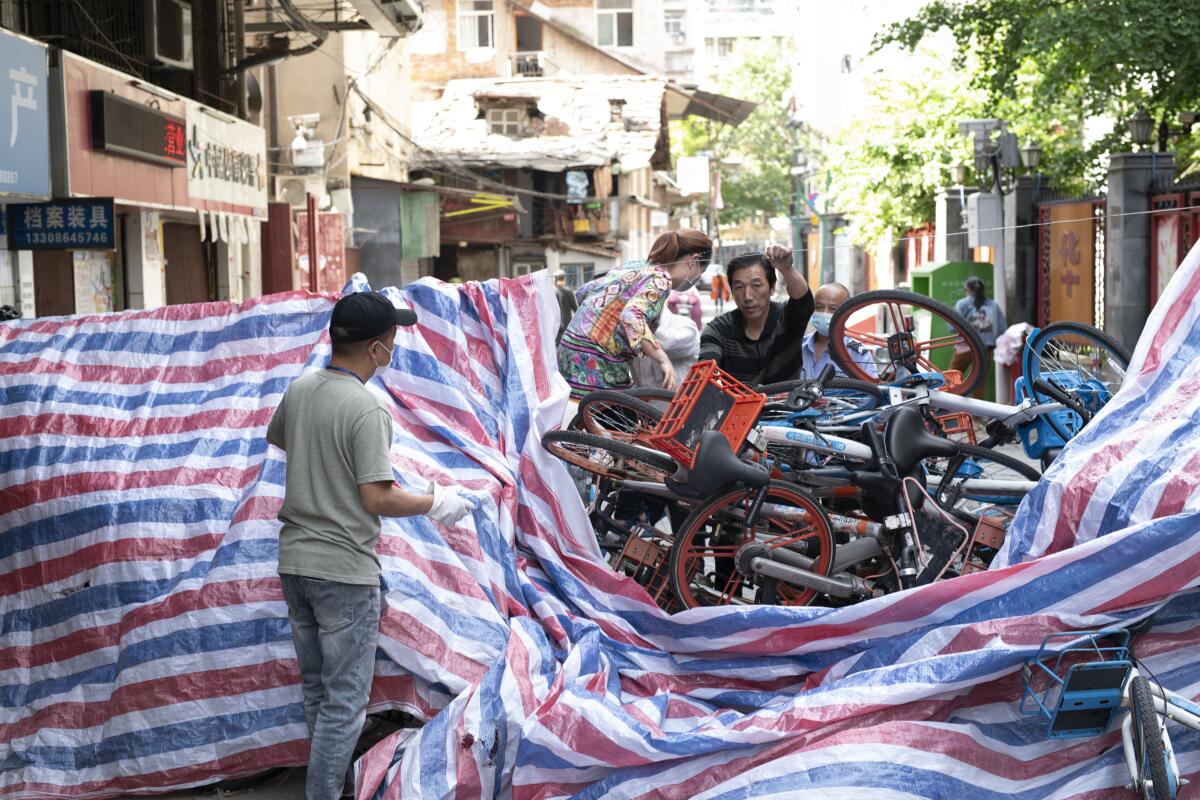
“What’s happening? We’re closing again?” a woman shouted over the bikes at a security guard on the other side. As he struggled to secure a tarp over the blockade, another woman clambered over the bicycle mountain, determined to take her planned route home.
“Please scan and enter. Please scan and enter,” a robotic voice in a Hubei accent repeated at a tent outside one building inside the neighborhood. A community worker sat in front of the tent, taking temperatures and pointing to a QR code that residents were asked to scan to keep track of every entry or exit.
One middle-aged woman stepped out of her apartment on the building’s second floor. The room behind her was filled with stacks of sealed cardboard boxes. Her family ran an online stationery store and delivery service, she said, sending school supplies around the country.
During the lockdown, though, they’d only been allowed to go outside once a day, and packages sent to the outside world from Wuhan were restricted. She’d spent 76 days at home with her husband and their undeliverable boxes.
“We only just started going out for groceries again,” she said. She’d been nervous about a second wave in the fall. “But is it already getting worse?”
Coronavirus clusters from Seoul clubs trigger anger, blame
In another neighborhood, a couple stood on their balcony two floors above a supermarket, lowering a plastic bag on a rope to the ground. A worker loaded eggs and vegetables in the bag before they hauled the bag back up, the wife telling her husband to watch out as it swung in the wind.
“This is easier than putting on our gloves and masks and goggles to go outside,” the woman explained from above.
By Wednesday evening, news of the citywide testing had spread across Wuhan and China, though some residents said they still hadn’t received any such notification from their community workers. Another community worker in Qiaokou district said she’d notified her residents of testing, but didn’t know when it would be done.
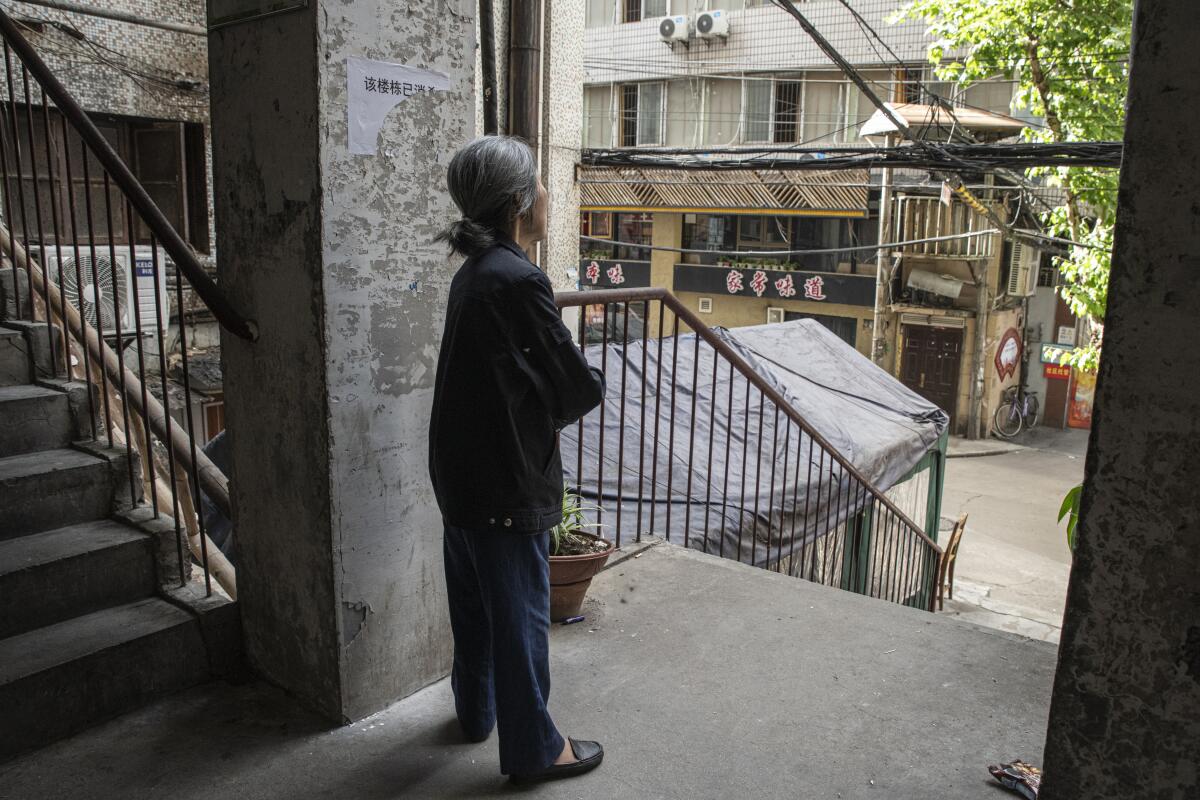
Whether restrictions on movement are reinstated makes little difference for some. As residents of one neighborhood hollered from their balconies and bikes on Tuesday afternoon, asking questions about the new tests and roadblocks, a gray-haired woman stood in front of an old building, hunched slightly with her hands behind her back.
She hadn’t left her apartment building since January, she said, pointing to her stunted legs: “It’s hard for me to walk.” But she came outside occasionally, blinking at the sudden shift from her dark room, to look at a tree across the street.
“See how the leaves are moving,” she said — then fell silent, gazing as they rustled in the light.
More to Read
Sign up for Essential California
The most important California stories and recommendations in your inbox every morning.
You may occasionally receive promotional content from the Los Angeles Times.
